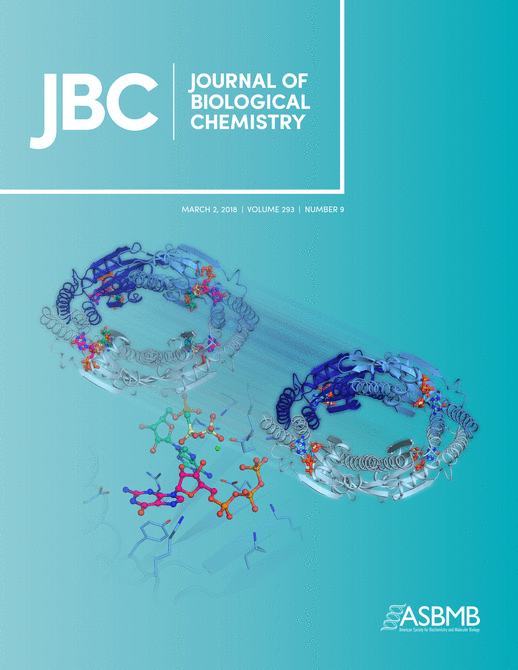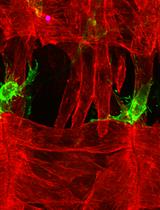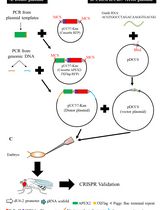- EN - English
- CN - 中文
Muscle Function Assessment Using a Drosophila Larvae Crawling Assay
果蝇幼虫爬行试验评估肌肉功能
发布: 2018年07月20日第8卷第14期 DOI: 10.21769/BioProtoc.2933 浏览次数: 6928
评审: Vivien Jane Coulson-Thomastarsis ferreiraAnonymous reviewer(s)
Abstract
Here we describe a simple method to measure larval muscle contraction and locomotion behavior. The method enables the user to acquire data, without the necessity of using expensive equipment (Rotstein et al., 2018). To measure contraction and locomotion behaviour, single larvae are positioned at the center of a humidified Petri dish. Larval movement is recorded over time using the movie function of a consumer digital camera. Subsequently, videos are analyzed using ImageJ (Rueden et al., 2017) for distance measurements and counting of contractions. Data are represented as box or scatter plots using GraphPad Prism (©GraphPad Software).
Keywords: Locomotion (运动)Background
It is well known that despite other factors, the composition of the surrounding extracellular matrix (ECM) is of great relevance for proper organ functionality. Changes in its composition can ultimately lead to organ malfunction or failure. Using the muscles of third instar wandering larvae as a model, we can assess the influence of the concentration of single ECM proteins on meshwork flexibility or strength with larval locomotion behavior as a readout. In general, this is also possible for first or second instar larvae, but we decided to use wandering third instar larvae due to their large body size. For precise aging of Drosophila larvae, we refer to the descriptions given by Demerec (1950).
A wide range of methods for measuring Drosophila melanogaster larvae crawling has arisen in recent years. Techniques such as FIM2c (Risse et al., 2017) enable the user to study locomotion in a detailed manner; however, they require a specialized set of equipment. The simple test described herein allows the recording of differences in crawling speed and muscle contractibility with tools that can most likely be found in every laboratory or students classroom. The method is based on a protocol published by Nichols et al. (2012). However, instead of using agar-filled plates, we conducted our experiments in humidified, empty Petri dishes. Thereby, we eliminate the problem of larvae digging into the agar, which can negatively influence the measurement of Z-direction crawling, leading to a loss of information.
Materials and Reagents
- Polystyrene Petri dish 92 x 16 mm with ventilation cams (SARSTEDT, catalog number: 82.1473.001 )
- Paintbrush, Marabu Universal round No. 1 or comparable (Marabu, catalog number: 4007751346186 )
- Graph paper (0.2 cm2 grids) (LANDRÉ, catalog number: 100050441 or comparable)
- Third instar wandering larvae of respective strains (e.g., w1118, BL3605)
- Tap water
Equipment
- QuickMistTM Spray bottle (Dynamo, catalog number: 605144 )
- Stereomicroscope (ZEISS, model: Stemi 2000-C ) with an attached light source (SCHOTT, model: KL 200 LED )
- Canon EOS 1000D (Canon, model: EOS 1000D ) (or similar camera with attachable microscope tube and video function. Alternatively, any digital camera with capability to focus objects in the distance range of 5-10 cm and video function is suitable. A tripod or reproduction stand should be at hand)
Software
- FIJI 2.0.0 (Schindelin et al., 2012) or ImageJ 2.0.0 (Rueden et al., 2017)
- GraphPad Prism 5 (©GraphPad Software) or comparable software with a scatter plot or box plot tool (The R Project for Statistical Computing, R Core Team (2013))
Procedure
文章信息
版权信息
© 2018 The Authors; exclusive licensee Bio-protocol LLC.
如何引用
Readers should cite both the Bio-protocol article and the original research article where this protocol was used:
- Post, Y. and Paululat, A. (2018). Muscle Function Assessment Using a Drosophila Larvae Crawling Assay. Bio-protocol 8(14): e2933. DOI: 10.21769/BioProtoc.2933.
- Rotstein, B., Post, Y., Reinhardt, M., Lammers, K., Buhr, A., Heinisch, J. J., Meyer, H. and Paululat, A. (2018). Distinct domains in the matricellular protein Lonely heart are crucial for cardiac extracellular matrix formation and heart function in Drosophila. J Biol Chem 293(20): 7864-7879.
分类
发育生物学 > 细胞生长和命运决定 > 肌纤维
发育生物学 > 形态建成 > 能动性
您对这篇实验方法有问题吗?
在此处发布您的问题,我们将邀请本文作者来回答。同时,我们会将您的问题发布到Bio-protocol Exchange,以便寻求社区成员的帮助。
Share
Bluesky
X
Copy link












